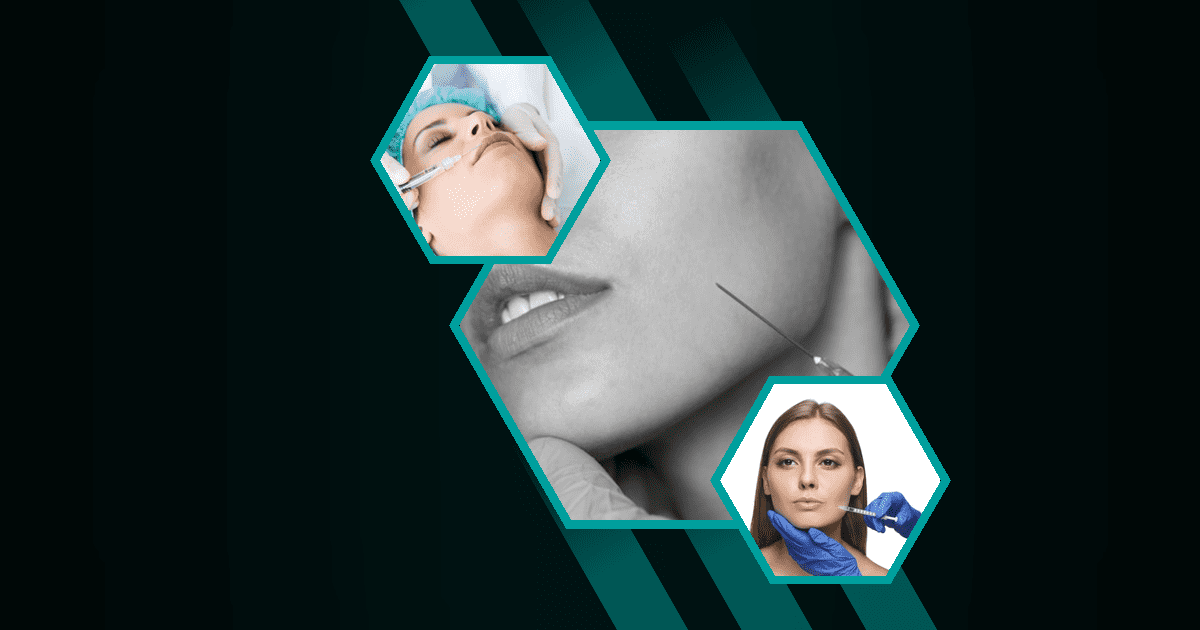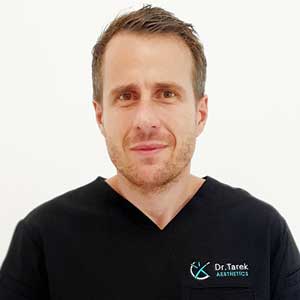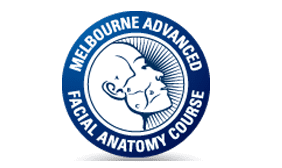Can Botox Be Used Around the Mouth? A Comprehensive Guide
Botox, a popular cosmetic treatment, is often associated with smoothing forehead lines and crow’s feet. However, many wonder, can Botox be used around the mouth? The answer is yes, Botox can be effectively used to address wrinkles and fine lines around the mouth area. This treatment is gaining popularity for its ability to enhance facial aesthetics by targeting specific concerns such as smoker’s lines and marionette lines.
Understanding Botox and Its Applications
Botox is a neurotoxin that temporarily relaxes muscles, reducing the appearance of wrinkles. It is widely used in various areas of the face, including the forehead, eyes, and mouth. When applied around the mouth, Botox can help smooth out lines and create a more youthful appearance. This treatment is particularly beneficial for individuals looking to address signs of aging without undergoing invasive procedures.
Benefits of Perioral Botox Injections
Perioral Botox injections offer several benefits for those seeking to improve the appearance of their mouth area. These injections can effectively reduce the appearance of fine lines and wrinkles, providing a smoother and more youthful look. Additionally, Botox can enhance the shape and volume of the lips, creating a subtle yet noticeable improvement in overall facial aesthetics.
Book A Consultation With Dr Tarek Bayazid
Top-rated Plastic Surgeon For Botox in Dubai
Installment Plan Available
- Reduces fine lines and wrinkles around the mouth
- Enhances lip shape and volume
- Provides a non-invasive solution for facial rejuvenation
How Botox Works for Lip Lines and Wrinkles
Botox works by temporarily relaxing the muscles responsible for creating wrinkles and lines around the mouth. This relaxation helps smooth out the skin, reducing the appearance of lip lines and wrinkles. The treatment is particularly effective for targeting smoker’s lines and marionette lines, which can be challenging to address with other methods.
Targeting Smoker’s Lines and Marionette Lines
Smoker’s lines, also known as perioral lines, are vertical wrinkles that form around the lips. Marionette lines are the lines that run from the corners of the mouth down to the chin. Botox can effectively target these lines by relaxing the underlying muscles, resulting in a smoother and more youthful appearance.
- Smoker’s lines: vertical wrinkles around the lips
- Marionette lines: lines from mouth corners to chin
- Botox relaxes muscles to smooth these lines
Enhancing Lip Shape and Volume
In addition to reducing wrinkles, Botox can enhance the shape and volume of the lips. By strategically injecting Botox around the mouth, practitioners can create a subtle lift and fullness, improving the overall appearance of the lips. This enhancement can be particularly beneficial for individuals with thin or asymmetrical lips.
- Creates a subtle lift and fullness
- Improves lip symmetry and appearance
- Beneficial for thin or asymmetrical lips
Duration of Results for Perioral Botox
The results of perioral Botox typically last for three to four months. However, the duration can vary depending on individual factors such as metabolism and lifestyle. Regular maintenance treatments are recommended to maintain the desired results and ensure a consistently youthful appearance.
- Results last 3-4 months
- Duration varies by individual factors
- Regular maintenance recommended
Botox Injection Techniques for the Mouth Area
Administering Botox around the mouth requires precision and expertise to achieve optimal results. Practitioners must have a thorough understanding of facial anatomy and muscle dynamics to ensure safe and effective treatment.
Precision and Expertise Required
Injecting Botox around the mouth demands a high level of precision and expertise. Practitioners must carefully assess the patient’s facial structure and muscle activity to determine the appropriate injection sites and dosages. This precision ensures that the treatment is both safe and effective, minimizing the risk of complications.
- High level of precision required
- Assessment of facial structure and muscle activity
- Ensures safe and effective treatment
Customized Treatment Plans
Each patient is unique, and a customized treatment plan is essential for achieving the best results with perioral Botox. Practitioners work closely with patients to understand their specific concerns and goals, tailoring the treatment to meet their individual needs. This personalized approach ensures that patients achieve the desired outcome while maintaining a natural appearance.
- Customized treatment plans for each patient
- Tailored to individual concerns and goals
- Ensures natural and desired results
Combining Botox with Other Treatments
For enhanced results, Botox can be combined with other cosmetic treatments such as dermal fillers. This combination can address multiple signs of aging, providing a comprehensive facial rejuvenation. By targeting different areas of the face, practitioners can create a harmonious and balanced appearance.
- Combines Botox with dermal fillers
- Addresses multiple signs of aging
- Provides comprehensive facial rejuvenation
Is Botox Safe for Use Around the Mouth
Botox is generally considered safe for use around the mouth when administered by a qualified and experienced practitioner. However, it is important to understand the FDA approval status and compare Botox to other dermal fillers to make an informed decision.
FDA Approval Status
The FDA approved Botox for cosmetic use in 2002, making it a well-established treatment option. While Botox is not specifically approved for use around the mouth, it is commonly used off-label for this purpose by experienced practitioners. Patients should consult with their provider to ensure the treatment is appropriate for their needs.
- FDA approved for cosmetic use in 2002
- Commonly used off-label for mouth area
- Consultation with provider recommended
Comparing Botox to Other Dermal Fillers
Botox and dermal fillers are both popular options for addressing facial wrinkles, but they work in different ways. While Botox relaxes muscles to reduce wrinkles, dermal fillers add volume to the skin. Patients should discuss their specific concerns and goals with their provider to determine the most suitable treatment option.
- Botox relaxes muscles, fillers add volume
- Different mechanisms for wrinkle reduction
- Consultation to determine suitable option
Long-term Safety Considerations
Long-term safety is an important consideration for patients considering Botox around the mouth. While Botox is generally safe, repeated treatments over time may lead to muscle weakening or resistance. Patients should discuss the potential long-term effects with their provider to make an informed decision.
- Long-term safety considerations
- Potential for muscle weakening or resistance
- Discussion with provider recommended
Alternatives to Botox for Mouth Wrinkles
While Botox is a popular choice for addressing mouth wrinkles, there are alternative treatments available. Patients may consider dermal fillers, non-invasive options, and lifestyle changes to achieve their desired results.
Dermal Fillers and Their Benefits
Dermal fillers are a popular alternative to Botox for addressing mouth wrinkles. These fillers add volume to the skin, smoothing out wrinkles and enhancing facial contours. They are particularly effective for individuals with deeper lines or volume loss around the mouth.
- Add volume to smooth wrinkles
- Enhance facial contours
- Effective for deeper lines or volume loss
Non-invasive Treatment Options
Non-invasive treatments such as laser therapy and chemical peels can also improve the appearance of mouth wrinkles. These treatments work by stimulating collagen production and promoting skin renewal, resulting in a smoother and more youthful appearance.
- Laser therapy and chemical peels
- Stimulate collagen production
- Promote skin renewal for smoother appearance
Lifestyle Changes for Wrinkle Prevention
In addition to cosmetic treatments, lifestyle changes can help prevent the formation of mouth wrinkles. Maintaining a healthy diet, staying hydrated, and protecting the skin from sun damage are essential for preserving a youthful appearance.
- Healthy diet and hydration
- Sun protection for skin preservation
- Essential for wrinkle prevention
How long does Botox last around the mouth
The longevity of Botox results around the mouth can vary based on several factors. On average, patients can expect the effects to last for three to four months. However, individual factors such as metabolism, lifestyle, and the specific area treated can influence the duration of results.
Factors Affecting Botox Longevity
Several factors can affect how long Botox lasts around the mouth. These include the patient’s metabolism, the dosage used, and the specific area treated. Patients with a faster metabolism may find that the effects wear off more quickly, while those with a slower metabolism may experience longer-lasting results.
Maintenance and Follow-up Treatments
To maintain the desired results, regular follow-up treatments are recommended. Patients should work with their provider to develop a maintenance plan that suits their individual needs and goals. This plan may involve scheduling treatments every three to four months to ensure a consistently youthful appearance.
Can Botox lift the corners of the mouth
Botox can be used to lift the corners of the mouth, addressing a downturned appearance. By relaxing the muscles responsible for pulling the corners downward, Botox can create a subtle lift and improve the overall facial expression.
Treating Downturned Mouth Corners
Downturned mouth corners can create a sad or tired appearance. Botox can effectively treat this concern by relaxing the depressor anguli oris muscle, which is responsible for pulling the corners of the mouth downward. This treatment results in a more uplifted and pleasant expression.
Combining Botox with Other Techniques
For enhanced results, Botox can be combined with other techniques such as dermal fillers or thread lifts. These combinations can provide additional lift and volume, creating a more balanced and rejuvenated appearance.
What are the side effects of Botox around the mouth
Botox is generally safe, but there are potential side effects associated with its use around the mouth. Common side effects include temporary bruising, swelling, and redness at the injection site. In rare cases, patients may experience difficulty speaking or smiling, although these effects typically resolve on their own.
Common and Rare Side Effects
Common side effects of Botox around the mouth include bruising, swelling, and redness. These effects are usually mild and resolve within a few days. Rare side effects may include difficulty speaking or smiling, but these are typically temporary and resolve on their own.
Managing and Minimizing Risks
To minimize the risk of side effects, patients should choose a qualified and experienced provider for their Botox treatment. Following post-treatment instructions and attending follow-up appointments can also help manage and reduce the risk of complications.
Choosing a Qualified Provider for Perioral Botox
Selecting a qualified provider is crucial for ensuring safe and effective Botox treatment around the mouth. Patients should prioritize experience and credentials when choosing a practitioner.
Importance of Experience and Credentials
Experience and credentials are essential factors to consider when choosing a Botox provider. Practitioners with extensive experience and proper credentials are more likely to deliver safe and effective results. Patients should verify their provider’s qualifications and ask about their experience with perioral Botox treatments.
Questions to Ask During Consultation
During the consultation, patients should ask their provider about their experience, the treatment process, and potential risks. Understanding the provider’s approach and expertise can help patients feel confident in their decision and ensure a positive treatment experience.
Cost Considerations for Botox Around the Mouth
The cost of Botox treatment around the mouth can vary based on several factors. Patients should consider these factors and explore insurance coverage and financing options to make an informed decision.
Factors Influencing Treatment Costs
Several factors can influence the cost of Botox treatment around the mouth, including the provider’s experience, the geographic location, and the number of units required. Patients should discuss these factors with their provider to understand the overall cost of treatment.
Insurance Coverage and Financing Options
While Botox is typically not covered by insurance for cosmetic purposes, some providers offer financing options to make the treatment more affordable. Patients should inquire about payment plans and financing options during their consultation to explore available options.
Recovery and Aftercare for Perioral Botox
Proper recovery and aftercare are essential for achieving the best results with perioral Botox. Patients should follow post-treatment instructions and know when to expect results.
Post-Treatment Instructions
After receiving Botox around the mouth, patients should follow their provider’s post-treatment instructions to ensure optimal results. These instructions may include avoiding strenuous activities, refraining from touching the treated area, and staying upright for a few hours after the procedure.
When to Expect Results
Patients can typically expect to see the results of their perioral Botox treatment within a few days to a week. The full effects may take up to two weeks to become apparent, and patients should attend follow-up appointments to assess the results and discuss any concerns.
Combining Botox with Other Facial Rejuvenation Treatments
Combining Botox with other facial rejuvenation treatments can enhance the overall results and provide a more comprehensive approach to anti-aging.
Synergistic Effects with Dermal Fillers
Botox and dermal fillers can work synergistically to address multiple signs of aging. While Botox relaxes muscles to reduce wrinkles, dermal fillers add volume to the skin, creating a more youthful and balanced appearance.
Comprehensive Facial Rejuvenation Plans
A comprehensive facial rejuvenation plan may involve combining Botox with other treatments such as chemical peels, laser therapy, or thread lifts. This approach can address various concerns and provide a more complete and harmonious facial rejuvenation.
By understanding the benefits, risks, and alternatives of Botox around the mouth, patients can make informed decisions about their cosmetic treatments. Consulting with a qualified provider and exploring personalized treatment plans can help individuals achieve their desired results and maintain a youthful appearance.
Stats:
1. According to the American Society of Plastic Surgeons, Botox injections were the most popular minimally invasive cosmetic procedure in 2020, with over 4.4 million procedures performed. (Source: https://www.plasticsurgery.org/news/plastic-surgery-statistics)
2. A study published in the Journal of the American Academy of Dermatology found that 82% of patients were satisfied with their perioral Botox treatments. (Source: https://www.jaad.org/article/S0190-9622(18)32224-9/fulltext)
3. The FDA approved Botox for cosmetic use in 2002, making it a well-established treatment option. (Source: https://www.fda.gov/consumers/consumer-updates/botox-cosmetic )
FAQ’s
Can Botox be used to reduce wrinkles around the mouth?
Yes, Botox can be used to minimize the appearance of fine lines and wrinkles around the mouth, particularly for issues like “lip lines” or “smoker’s lines.” However, it requires precise application by a qualified professional because the mouth area is very sensitive and Botox can affect muscle movement.
Is Botox around the mouth safe?
When performed by a skilled and experienced practitioner, Botox is generally safe for use around the mouth. However, because the mouth is involved in so many facial expressions and movements, a cautious approach is essential to avoid over-treating, which could lead to unintended effects like difficulty smiling or speaking.
What are the common side effects of Botox around the mouth?
Mild bruising, swelling, or soreness at the injection site are the most common side effects. Rarely, Botox in this area may cause temporary asymmetry or slight difficulty with mouth movements. Consulting with a qualified provider can help reduce these risks.
How long does Botox last around the mouth area?
The effects of Botox around the mouth typically last 3-4 months, though this can vary based on individual metabolism and the specific area treated. Touch-ups are usually needed to maintain the effect over time.











Related Posts